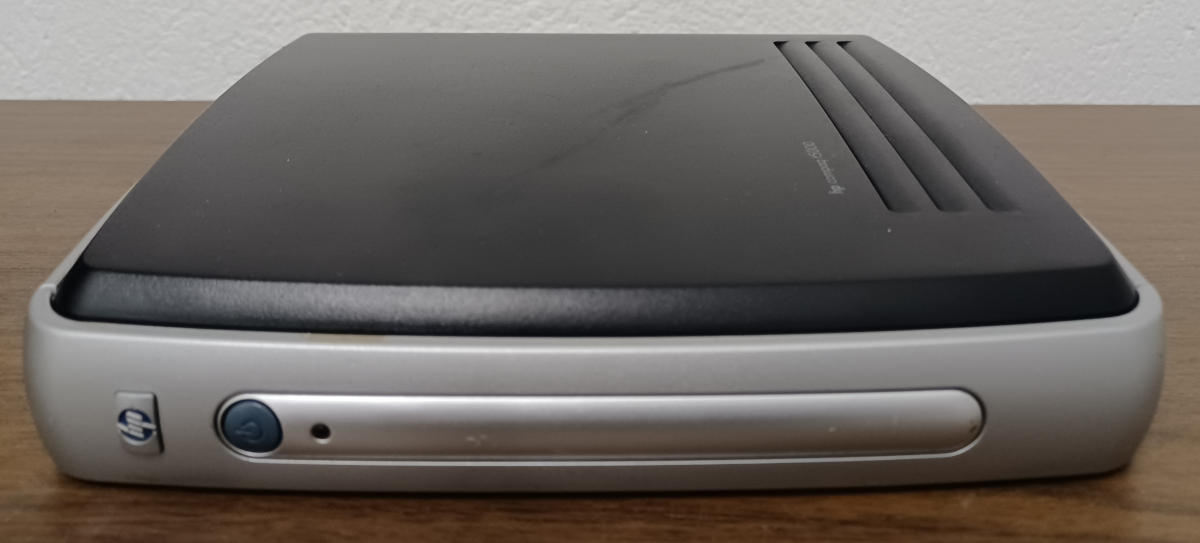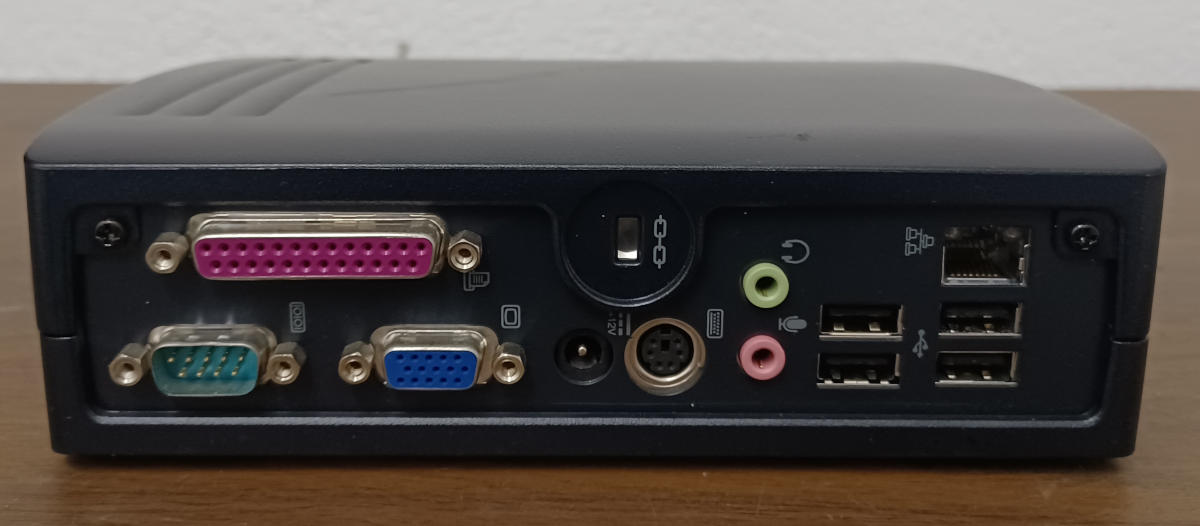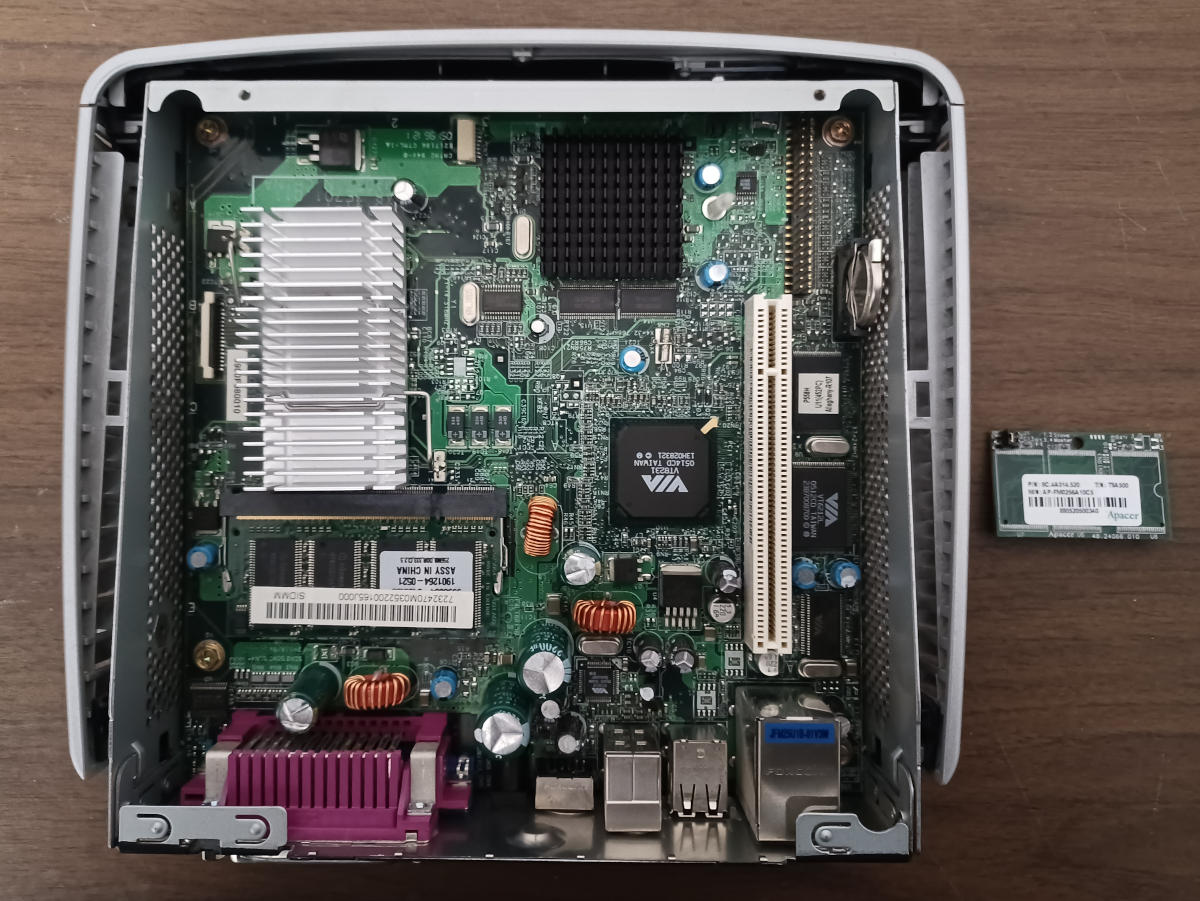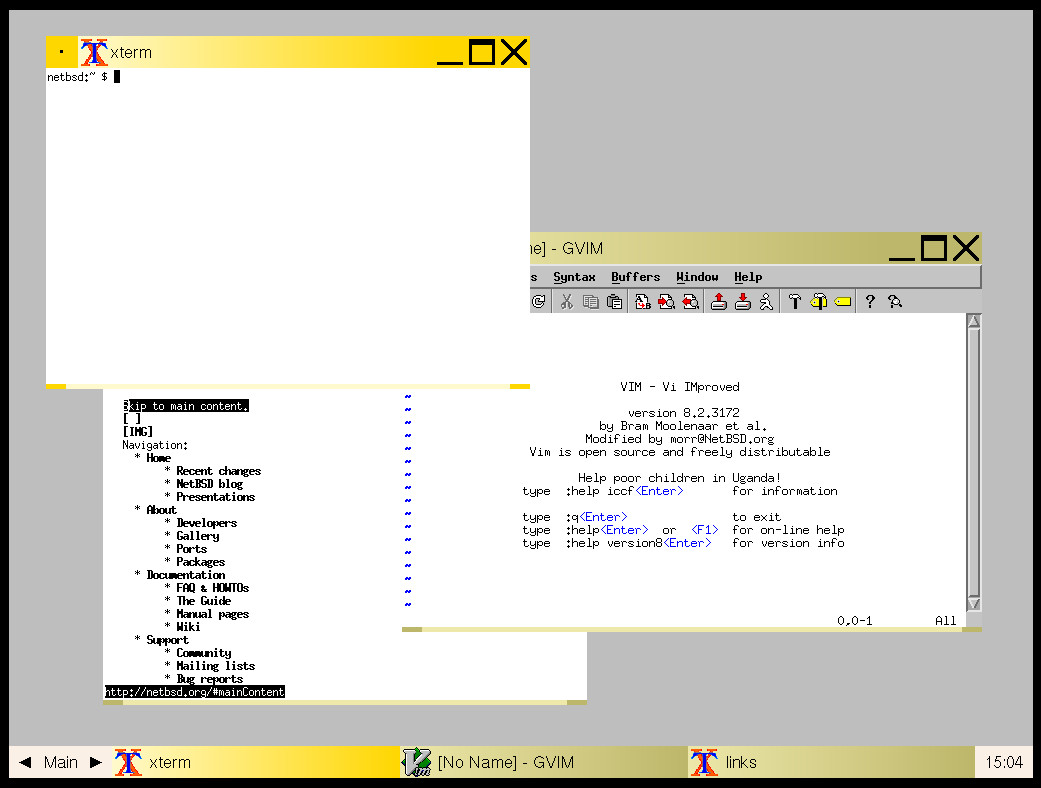HP t5710 Runs NetBSD With Xorg In 1 GB
I recently bought several old HP thin clients t5710 on Ebay, mostly because I wanted to install FreeDOS and other DOSes on bare metal. And since each box did cost only about 17 EUR, I thought it might be a good idea to give them a try.
 Thin Client HP t5710 - Front view
Thin Client HP t5710 - Front view
 Thin Client HP t5710 - Rear view with the ports
Thin Client HP t5710 - Rear view with the ports
The t5710 thin client features some interesting hardware components:
- a Transmeta Crusoe CPU clocked at 800 MHz;
- an ATI Radeon 7000M graphics card with 16 MB of RAM;
- the VIA VT8231 chipset, with built-in Sound Blaster audio, and
- a PCI expansion slot. The thin client also has an Ethernet port, 4 USB 2.0 ports, microphone and headphone jacks, PS/2, VGA, serial and parallel ports.
Each unit came with a 44-pin IDE 256 MB flash module and 256 MB of DDR-RAM. I upgraded two units by installing a 1 GB IDE flash module and 1 GB of RAM, in order to see if and how well they can run a modern OS like NetBSD/i386.
 Thin Client HP t5710 - Internal view with unmounted IDE flash module
Thin Client HP t5710 - Internal view with unmounted IDE flash module
The installation of NetBSD/i386 9.2 from an USB stick went smoothly. Of the 1 GB storage space I was able to use 977 MB for NetBSD. In addition to the base OS components I installed:
- Xorg with the VESA driver. Note: The VESA driver allows you to use only the video modes listed by the BIOS, so your choices for the screen resolution could be limited!
- fluxbox as window manager.
- The vim and gvim (Motif version) editors.
- links as console Web browser.
- alpine as mail client.
- tigervnc as VNS server in order to use the t5710 as a headless PC.
 Thin Client HP t5710 - The fluxbox window manager running on TigerVNC
Thin Client HP t5710 - The fluxbox window manager running on TigerVNC
After having configured the system I was left with about 40 MB of free storage space. The performance of the t7510 seems to be good enough to use it for small system administration tasks, which is something I do on a daily base on remote servers. Given the low power consumption and the fact that the thin client runs very quietly, I would say that I am quite satisfied with the results of this experiment in hardware upcycling!
